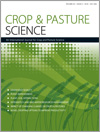CP18014Genotype × management strategies to stabilise the flowering time of wheat in the south-eastern Australian wheatbelt
New genetic (G) × management (M) strategies that stabilise flowering time are needed to lift water-limited yield potential in the increasingly variable climate of the south-eastern Australian wheatbelt. Our simulation experiments predict that long-coleoptiles winter wheats sown after long fallow allow for early crop establishment with access to more stored soil water, have stabilised flowering and maximise yield. The most promising G × M strategies identified in this study should be verified in field experiments.




